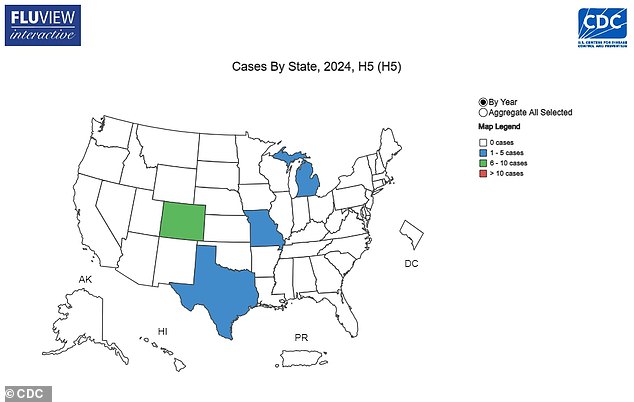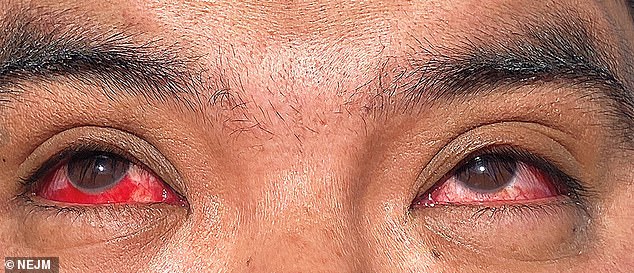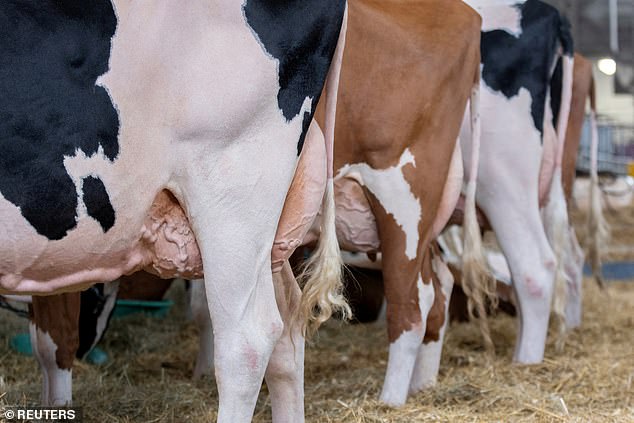California health officials on Thursday confirmed the state’s second human case of bird flu, just hours after announcing the first, raising fears of an outbreak.
The second infected person, like the first, had contact with dairy cows carrying the virus. Both have mild symptoms, including red, swollen eyes.
The cases are not linked and there is no indication that the first person transmitted the infection to the second, and officials say there is no transmission from person to person, but from animal to human.
Fears about the spread of bird flu are growing as, for the first time, the virus was diagnosed in a patient in Missouri who had not been in contact with sick birds, livestock or other animals.
The second person infected with bird flu in California, like the first, came into contact with dairy cattle carrying the pathogen.
California health officials maintain the overall risk to the public. stays lowsince there is no indication that the virus can be transmitted from one person to another.
According to the California Department of Public Health (CDPH): ‘People who interact with infected animals, such as dairy or poultry farm workers, are at increased risk of contracting bird flu.
‘The CDPH recommends that anyone working with animals or materials that are infected or potentially infected with bird flu wear personal protective equipment, or PPE, such as respirators (N95 masks), eye protection (face shields or safety glasses ) and gloves. virus.’
More than 250 dairy herds in 14 states have been infected with H5N1.
California officials added: “As an added precaution, and in accordance with long-standing state and federal requirements, milk from sick cows is not permitted in the public milk supply.”
Fears about the spread of bird flu are growing as, for the first time, the virus was diagnosed in a patient in Missouri who had not been in contact with sick birds, livestock or other animals.

The above shows the states where human cases of avian influenza, H5N1, have been detected, not yet including the most recent presumptive positive case in California.

This is the first photograph of the Texas farm worker infected with bird flu. The infection started in the right eye, before spreading to the left.
It is possible that the patient drank raw milk, which made him sick.
While drinking raw milk could transmit the infection to the drinker, the milk found on grocery store shelves has been pasteurized to kill pathogens and is generally safe.
The worst case scenario is that the patient has caught the virus from someone else and the virus has begun to silently spread among Americans.
So far, fourteen people have tested positive for H5N1, but because bird flu doesn’t always cause symptoms, there could be more people sick who have never been tested, according to the Centers for Disease Control and Prevention.
In March, a Texas dairy farmer tested positive for the virus and experienced symptoms similar to those reported in California patients: conjunctivitis.
While the man suffered “very mild” symptoms, photos show how the virus caused the blood vessels in his eyes to burst, causing bleeding on the surface of his eyeballs.
Other symptoms that H5N1 patients may experience include cough, sore throat, runny or stuffy nose, headaches, and body aches or muscle pain.
Nearly 900 people in 23 countries have been infected with the H5N1 strain of bird flu over the past two decades, but all were linked to wild or farmed birds.

